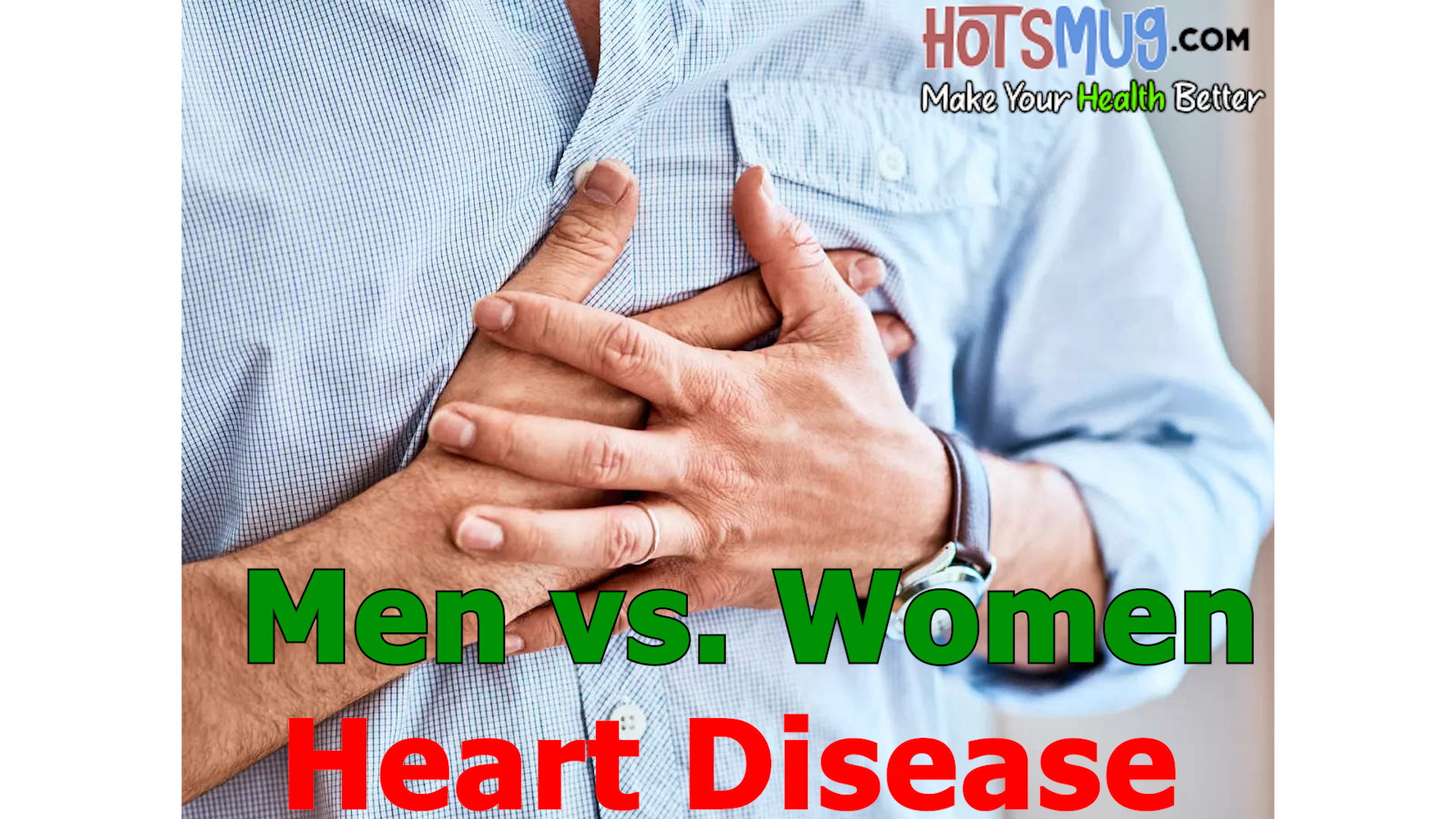A woman’s heart looks just like a man’s, but there are significant differences. For example, a woman’s heart is usually smaller as are some of its interior chambers. The walls that divide some of these chambers are thinner. A woman’s heart pumps faster than a man’s, but ejects about 10% less blood with each squeeze. When a woman is stressed, her pulse rate rises and her heart ejects more blood. When a man is stressed, the arteries of his heart constrict, raising his blood pressure.
Why do these differences matter? They matter because gender plays a role in the symptoms, treatments, and outcomes of some common heart diseases.
According to the World Health Organization, around 32%Trusted Source of deaths worldwide are linked to cardiovascular (CV) conditions.
Research into CV conditions commonly focuses on major adverse CV events, including hospitalization, as opposed to symptoms.
Outlining symptoms for various CV conditions could aid clinicians in diagnosis and treatment.
Recently, researchers reviewed studies highlighting symptoms of the following six cardiovascular conditions:
- heart attack
- heart failure
- valve disease
- stroke
- rhythm disorders
- vein and artery disease
They found the most common symptoms in each condition and that these symptoms may vary between men and women and over time.
Cardiovascular disease is the leading causeTrusted Source of death in the United States.
The Heart Association says understanding and recognizing symptoms is essential for diagnosis and effective treatment.
Symptoms can go unreported or underreported because some symptoms are not necessarily associated with cardiovascular disease.
The most common symptoms of heart disease, according to Dr, George Ruiz, the chair of the Department of Cardiology at the Geisinger medical centers in Pennsylvania, are:
- Angina (Chest discomfort/pain/pressure)
- Shortness of breath
- Decrease in exercise tolerance
- Palpitations
- Lower extremity swelling
“When most people think of [cardiovascular disease], they think of a heart attack,” says Dr. Richard Wright, a cardiologist at Providence Saint John’s Health Center in Santa Monica, California. “Unlike other cardiovascular symptoms, heart attack arises directly from the heart. When the heart is deprived of blood flow, it begins to ache, as any such jeopardized tissue would. The heart is an internal organ, and it is difficult for the body to localize where the discomfort is. Individuals with ongoing heart pain usually feel heaviness in the front upper chest, which may or may not extend to the throat, neck, lower jaw, shoulders, upper arms, or high back. Most people do not even describe this as pain, but rather as discomfort which persists for many minutes, accompanied by unexplained sweating, nausea, and generalized malaise.”
The Heart Association suggests it might be helpful to establish a baseline profile, which can help track symptoms over time and determine if the disease is progressing.
The following are different forms of cardiovascular disease listed in the association’s report, their common symptoms, and the symptoms women are most likely to report:
Heart Attack
- Chest pain can feel like pressure or discomfort; the pain can radiate to the jaw, shoulder, arm, or upper back
- Shortness of breath
- Sweating or a cold sweat
- Unusual fatigue
- Nausea
- Lightheadedness
Men often report chest pain as the main or only symptom. Women are more likely to report symptoms in addition to or in place of chest pain
Heart Failure
- Shortness of breath
- Nausea, upset stomach, vomiting, or loss of appetite
- Fatigue
- Exercise intolerance
- Insomnia
- Pain
- Cognitive dysfunction
Women are more likely to report a lower quality of life due to depression and anxiety. They also have gastrointestinal issues, more intense pain, swelling, and sweating.
Heart valve disease
- Shortness of breath
- Pulmonary hypertension
- Symptoms might be mild or like those for heart failure
Men are more likely to experience chest pain while women might have shortness of breath, exercise intolerance, and physical frailty
Stroke
Medical professionals often refer to stroke symptoms as FAST – face drooping, arm weakness, speech difficulty, and time to call 9-1-1. In addition, symptoms can include:
- Confusion
- Dizziness
- Loss of coordination or balance
- Visual changes
Impaired thinking can impact a person’s ability to recognize symptoms.
Women might also have a headache, altered mental state, or be in a stupor or coma.
Rhythm disorders (also called arrhythmias)
- Abnormal heartbeat
- Fatigue
- Shortness of breath
- Dizziness
Less commonly, people with rhythm disorders might experience chest pain, fainting, or anxiety.
Men might not experience symptoms; women are more likely to experience palpitations.
Vein and artery disease
Peripheral artery disease might have no symptoms or leg cramping in one or both calf muscles while walking. Pain can also be in other parts of the legs, feet, or toes.
There is an increased risk of heart attack or stroke when there are symptoms.
Women with this condition are more likely to experience symptoms of depression
Peripheral vein disease could also have no signs of leg pain. The leg pain can feel like achiness, heaviness, tightness, cramping, or restless leg syndrome. People with this disease might also have fatigue.
People younger than 65 are more likely to report pain, heaviness, achiness, and fatigue.
Symptoms can occur even when there are no visible signs of the condition.
Heart disease in women
“In general, women and men have similar symptoms for most heart conditions,” says Dr. Yu-Ming Ni, a cardiologist at MemorialCare Heart and Vascular Institute at Orange Coast Medical Center in California. “For example, the most common presentation of a heart attack is chest pain or pressure for both men and women.
“However, women who develop heart conditions tend to be older and have more associated medical problems, such as diabetes and high blood pressure,” Ni told Healthline. “This may help explain some differences in symptoms between men and women. However, we still do not fully understand the reason for these differences in symptoms.”
“Men continue to have higher rates of heart disease than women,” Ni continued. “But heart disease is the number one cause of death in both men and women. Women tend to have more severe heart disease when they first are diagnosed, have more severe symptoms, and often do not get as high-quality medical care for their heart disease as men. Increasing awareness of heart disease risk across genders is essential to fight this country’s heart disease epidemic.”
Heart disease usually shows up later in life for women. A first heart attack occurs at age 72 for women and about age 64 for men, according to the American Heart AssociationTrusted Source.
Despite heart disease being the number one cause of death in women, many say their physicians never talk to them about their risk, according to Harvard Health.
There are numerous health conditions specific to women that can increase their risk, according to Dr. Jim Liu, a cardiologist at the Ohio State University Wexner Medical Center.
“During pregnancy, women can develop gestational diabetes and preeclampsia, which increases the risk of developing diabetes and hypertension later in life and thus increase cardiovascular risk,” Liu told Healthline. “Other pregnancy-related conditions can increase a woman’s risk for heart diseases, such as preterm delivery, placental abruption, and spontaneous pregnancy loss. Heart conditions can also occur during pregnancy like peripartum cardiomyopathy or spontaneous coronary artery dissection.”
“Outside of pregnancy, certain autoimmune conditions, like lupus and rheumatoid arthritis, are much more common in women, and these are associated with an increase in cardiovascular risk,” Liu added. “Polycystic ovarian syndrome is a condition in women that increases [cardiovascular] risk because it is associated with obesity, insulin resistance, and diabetes. Certain hormonal birth control and hormonal replacement therapy in post-menopausal women also increase cardiovascular risk.”
Protect Yourself
Whether you are a man or a woman, it’s never too late to lower your chance of experiencing a heart attack. Here is what you need to do:
- Quit smoking or don’t start
- Get regular exercise (at minimum, walk 30 minutes a day)
- Eat a diet high in fruits, vegetables, whole grains, and fish and low in animal products, simple carbohydrates, and processed foods
- Maintain a normal weight, blood pressure, blood lipid, and blood sugar levels




